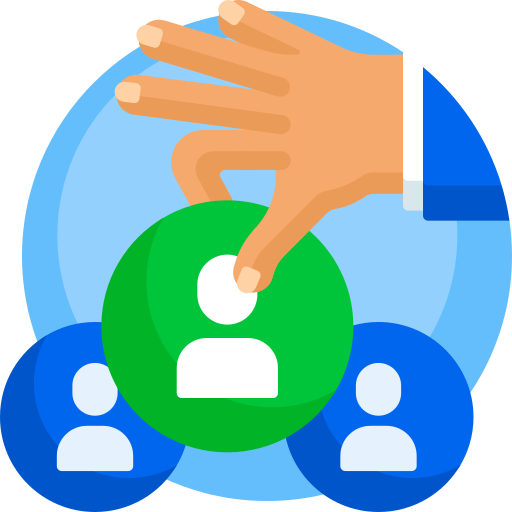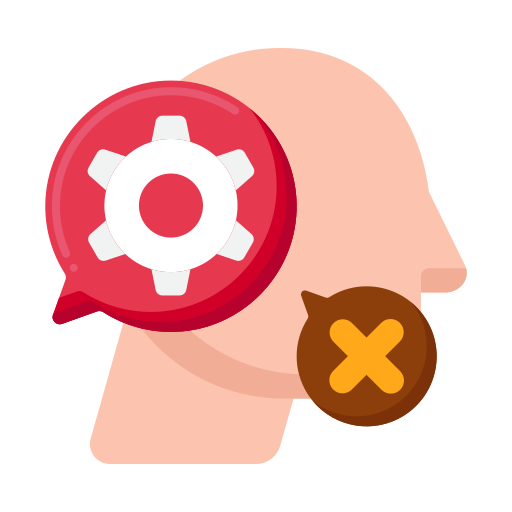Getting your shopping delivered to your doorstep is nothing new. But since the pandemic kicked demand for delivery services into overdrive, people around the world are more comfortable with online shopping than ever before. There will be more than 2.77 billion e-commerce buyers by 2025. So, it should come as no surprise that more and more people are interested in starting their own delivery businesses.
If that’s you, you’re in the right place. In this guide, we'll cover everything a small business owner needs to know about starting a delivery business. Let's jump in!
Why start a delivery business?
Running a delivery company can be a fantastic way to enjoy the flexibility of being your own boss, while also earning a decent income. Delivery businesses typically have low start-up costs and minimal infrastructure requirements. A delivery service business can also allow you to control your own schedule and workload, which makes it a popular choice for young parents, retirees and others who want a good work-life balance.
Whether you're delivering locally or nationally, there are plenty of opportunities to grow your business (if that’s what you want) and positively impact your community.
So if you're wondering whether there’s a way to turn your passion into a profitable venture, starting a delivery business might just be the perfect fit for you!
Are delivery businesses profitable?
Yes! As the demand for local delivery services rises, so does the potential profit. This is reflected in wages and salaries. In the United States, the average salary for people working in delivery services is $96,039 per year. Home delivery drivers earn over $95,000 on average, and senior delivery managers earn over $110,000.
Of course there are no guarantees. As with any new business, the key to profitability is to identify the needs of your target market, then develop a viable business plan to meet those needs. Keeping your cost per delivery as low as possible will be crucial. But with the right combination of services, technology, and marketing strategies, your delivery business can capitalize on current market trends and maximize profitability.
Can a small delivery company really compete with Amazon?
Amazon’s vast product catalogue and fast shipping make it a default online shopping option for a lot of people. But just because a small business can’t match Amazon’s power, that doesn’t mean you can’t find your own profitable ecommerce niche. Maybe you’ll attract customers who want to support a local retailer with sustainable practices and good working conditions. Or maybe they’re looking for unique, hand-made items, or just want to know they’re dealing with real people rather than a huge multinational corporation.
Don’t get distracted by thinking you need to offer next-day or same-day delivery, either. You could differentiate yourself by offering slower, less expensive deliveries; by using more sustainable packaging options, like returnable containers; or by offering more flexible delivery times. For example, in one study 73% of consumers said a convenient delivery time slot is more important than fast delivery — you could win by enabling your customers to choose their own delivery time window.
What types of delivery services are there?
Once you start looking for opportunities to start a delivery business, you’ll see them everywhere!
So, what type of delivery service do you want to offer? That depends on where your expertise can meet the needs of your target market. To give you some business ideas, here are examples of popular delivery services:
-
Flower deliveries
-
Pharmacy deliveries
-
Furniture and appliance deliveries
-
Parcel deliveries and courier services
-
Laundry and dry cleaning deliveries
-
Party and event supply deliveries
Whether you choose to be a courier-style business (i.e. delivering someone else’s products) or expand into deliveries with your own product (florists, bakeries, etc.), there are tons of opportunities to make money in the delivery business.
How much does it cost to start a delivery business?
The cost of starting a delivery business depends on several factors, such as the size and scope of your services, the type of equipment you plan to use, and any fees associated with obtaining the necessary permits or licenses. In general, getting started costs anywhere from $100-$20,000.
What do you need to start a delivery service?
While some businesses need big up-front capital investments and complex infrastructure, it’s possible to start a delivery business with far fewer resources. A basic starter kit might include:
-
A reliable delivery vehicle (car, cargo van, truck or bicycle)
-
A handtruck or dolly for moving heavy items
-
Delivery drivers
-
A valid driver's license
-
Commercial auto insurance coverage for your vehicle
-
GPS or navigation software
-
A smartphone (cellphone) or tablet
-
Packing materials (boxes, bubble wrap, etc.)
-
A domain name, a basic website, an email address and business cards and/or flyers
-
Business permits/licenses for your area
Of course, this list is not exhaustive. Depending on the scope of your small business, you may need additional equipment and materials to ensure a smooth start.
How to set up a delivery service: A step-by-step guide
Once you've gathered the resources necessary to start a delivery business, it's time to get your venture up and running. Here are the steps you'll need to take:
Step 1. Choose your niche
The first step is to decide which type of delivery services you want to offer. Your niche will be the foundation of your business, so it's important to choose one that meets the needs of your target market.
As you can see from the list above, there are plenty of delivery services to choose from, ranging from grocery and food deliveries to courier services. Think about the type of business you want to run, how much you have available to invest in equipment, and whether you want to employ other people. Your market research should help you understand which niches are most underserved in your local area. This will help you find the best idea for your own delivery business.
Step 2. Create a business plan
Any successful business starts with a great business plan. There are plenty of online and offline resources to help you with this. In the U.S., the Small Business Administration has a great website at sba.gov. Your local library or chamber of commerce are also both great places to find detailed, relevant local advice.
Very broadly, though, you’ll want to choose a business name, conduct a market analysis of your target audience, and figure out how much you’ll need to spend on startup costs to make your business a reality. Additionally, you’ll want to include a timeline for when you plan to launch, and a marketing plan.
Having a well-thought-out business plan will help you stay organized and focused on the tasks that need to be completed before opening day. If you're not sure what that looks like, you can always search for templates of business plans online or hire a professional to help you create one.
Step 3. Choose a business structure
There are three primary business entities to choose from when launching a delivery business: sole proprietorship, partnership, and corporation. Each structure has its own advantages and disadvantages, so be sure to do your research and decide which business model is best for you.
-
Sole Proprietorship: Easy to set up and great for entrepreneurs, but you're personally liable for all business debts and obligations.
-
Partnership: More capital is available, but you share control with other partners.
-
Corporation: Limited liability and legal protection, but there are more expenses associated with forming this type of business.
-
Limited Liability Company (LLC): Blends elements of partnerships and corporations, providing owners with limited personal liability while allowing profits and losses to be passed through to their personal income.
These business structures are common across many countries, although the exact regulations vary. in general, sole proprietorships and partnerships are simpler to manage, with less onerous regulatory and compliance requirements. On the other hand, corporations and LLCs will offer more protection for your personal assets.
Step 4. Get an EIN (Employer Identification Number)
In the U.S., you'll need to obtain a federal tax ID number, also known as an Employer Identification Number (EIN). This is a unique 9-digit number that identifies your business and allows you to open bank accounts, pay taxes, and hire employees. You can apply for an EIN online through the IRS website or by mail.
Other countries will have slightly different systems, but all of them need you to be scrupulous about your tax filings! Again, your local library or chamber of commerce is a good place to ask for advice about how to register for tax.
Step 5. Open a business bank account
Once your business is registered, you must open a business bank account. This helps keep your personal and business finances separate, and makes it easier to manage your taxes. You can choose from a local or online bank, but be sure to compare fees and services before you decide. Some options may be more cost-effective than others, or offer special features like free checking or electronic transfers.
Step 6. Get insured
Party equipment rental and delivery can be a great business, but insurance is vital.
It's vital to get the right business insurance policy for your delivery business. This will help protect you from any unexpected costs associated with an accident or theft of goods in transit. Types of insurance you may need include general liability insurance, commercial auto insurance, cargo insurance and worker's compensation. Check with your state or local government to see what specific types of insurance you need.
Step 7. Get the necessary licences or permits
You may need specific permits or business licenses, depending on where you plan to operate. For example, some states require food delivery businesses to get a special license, while others only require liability insurance. Research what is needed in your area and make sure you have all the necessary paperwork before launching your business.
Get a delivery management system
We said at the beginning of this article that keeping your cost per delivery as low as possible is crucial to the profitability of any delivery business. One of the best ways to do this is to use a delivery management system with route optimization. Apps like Routific, designed specifically for small to mid-sized businesses, can help by:
-
Enabling you to offer custom delivery time windows
-
Automatically creating optimized delivery routes with accurate ETAs
-
Dispatching routes directly to driver’s mobile phones
-
Tracking the day’s delivery progress in real time
-
Enabling drivers to easily capture photo and signature proof of delivery
-
Automatically sending notifications to your customers so they know when to expect their deliveries
The right delivery management system can help you maximize your deliveries per hour, without compromising driver safety or customer satisfaction. More deliveries per hour means less distance driven, lower fuel consumption and lower cost per delivery overall.
Step 11. Hire a team and start working
Once all your preparations are finished, it's time to hire a team and start delivering. Use job boards or local recruitment agencies to find qualified candidates that have the skills and experience you need for your business. Once you've hired your team, provide them with proper training and set expectations upfront so everyone is on the same page.
Now you're ready to launch your delivery business and start serving customers. Good luck — you’ve got this!
Are you interested to know about "The Ultimate Guide for Food Delivery App Development" click the clink below
https://www.mindnotix.com/blogs/the-ultimate-guide-for-food-delivery-app-development
For more information contact : support@mindnotix.com
Mindnotix Software Development Company


 AI-Taxi App
AI-Taxi App AI-Food App
AI-Food App AI-Property Mgmt App
AI-Property Mgmt App AI-CRM
AI-CRM AI-Fantasy App
AI-Fantasy App
 Web Development
Web Development App Development
App Development Business & Startup
Business & Startup Hire Developer
Hire Developer
 Digital Marketing
Digital Marketing Lead-generation
Lead-generation Creative Agency
Creative Agency Branding Agency
Branding Agency Augmented Reality
Augmented Reality Virtual Reality
Virtual Reality Internet of Things
Internet of Things Artificial Intelligence
Artificial Intelligence Blockchain
Blockchain Chatbot
Chatbot



